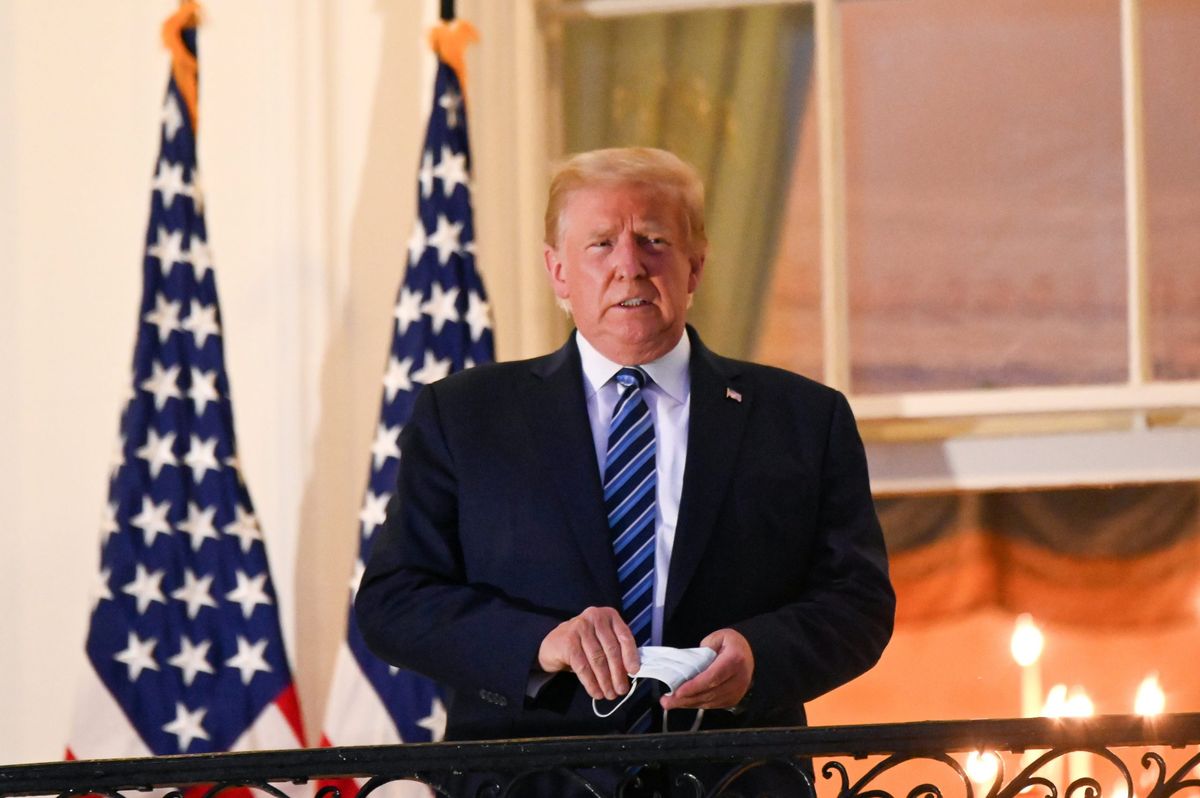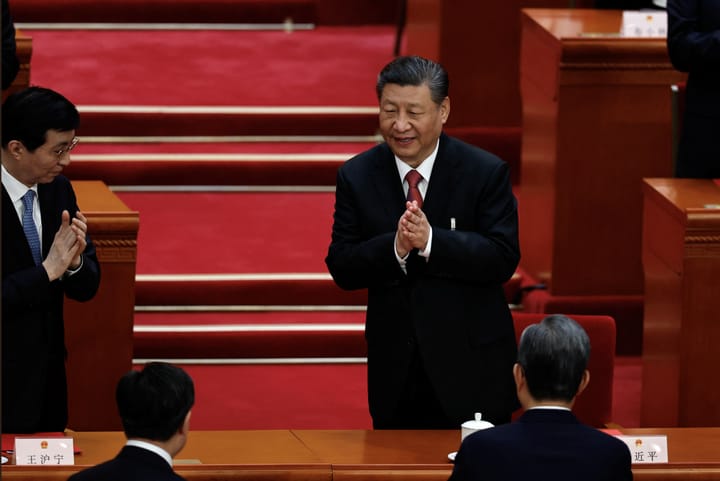President Trump’s COVID-19 diagnosis has proved challenging for the press to cover

A few minutes every morning is all you need.
Stay up to date on the world's Headlines and Human Stories. It's fun, it's factual, it's fluff-free.
Most details, including whether Trump really does have COVID-19, have faced intense scrutiny and skepticism.
Since President Donald Trump first announced via a tweet that he and his wife, Melania, had been diagnosed with COVID-19, the American press has been working diligently to cover the story. Yet, accurately reporting on Trump’s condition has not been easy. A mix of conflicting statements, admitted falsehoods and confounding photo ops have worked to obscure the truth.
A major issue is the mutual distrust between Trump and the media, which has called him the most dishonest president in history. Trump has pushed back on accusations of lying, calling the press “fake news,” which his supporters have also adopted. General polling has now found that American trust both in the media and Trump is low.
It is in this environment of pervasive cynicism that the press is attempting to keep the public informed on the health of the American president. For a president who is not only followed by conspiracy theories but also espouses them, getting to the truth about Trump’s health has been a challenge.
The uncertain timeline of Trump’s COVID-19 diagnosis
Since October 2, when Trump entered Walter Reed Medical Center in Bethesda, Maryland, the timeline and specifics of Trump’s diagnosis has been rewritten multiple times.
What is known for certain is that Trump tweeted on the evening of October 1 that he and his wife had tested positive for COVID-19, just hours after it was announced that his longtime adviser, Hope Hicks, had also tested positive. Almost all other details – including whether Trump really does have COVID-19 – have faced intense scrutiny and skepticism.
The questions begin with when Trump first received a positive test. It is known that Trump still attended public events on Thursday, even following Hicks’ diagnosis. However, after Trump’s doctors spoke to the media on Saturday morning, it appeared the president may have been diagnosed Wednesday. If true, Trump met with donors and supporters knowing he was sick.
During the press conference, Dr. Sean Conley referred to Trump being “72 hours into the diagnosis,” which would have put his diagnosis on Wednesday, not Thursday. Conley later released a statement saying he had misspoken and he should have said “day three.” The official timeline is that Trump was diagnosed on Thursday, but skepticism remains.
How sick is President Trump?
The press conferences have also deepened – not lessened – the uncertainty over the president’s condition. In the first press conference, Conley and his fellow doctors stated Trump was doing well, yet they avoided direct questions about whether Trump had been put on oxygen.
The next day, Conley admitted Trump had had issues breathing and had been put on oxygen. Facing questions about his misleading statements in the first press conference, Conley stated, “I didn’t want to give any information that might steer the course of illness in another direction and in doing so it came off that we were trying to hide something, which wasn’t necessarily true.”
Conley’s acknowledgment that he misled the press about Trump’s condition the day before angered some. He was accused of lying and ruining his and his team’s credibility. It also raised questions of whether the medical team was intentionally trying to downplay how sick Trump really is.
In that second press conference, the doctors revealed that Trump was receiving Dexamethasone, a steroid generally reserved for people who are in “severe and critical” condition. That has led to further speculation that, despite the best efforts to paint a positive picture, Trump’s condition is serious.
The spin from the president’s medical team may have been a genuine effort to quell concerns, but his administration’s efforts over the weekend to prove Trump is in good condition have mostly backfired.
There was a series of photos in which Trump was shown allegedly working while staying in the Walter Reed hospital suite. In the two images, Trump is looking at a stack of documents, pen in hand, in two different rooms. In one photo, he is wearing a suit jacket in front of a white wall with an American flag. In the other image, his jacket is off and he is in a wood-paneled room.
Observers quickly noted that in the first image, Trump can be seen signing his name in the middle of a blank piece of paper. Hours later, journalist Jon Ostrower tweeted that the encoded metadata for both images proved the images were taken only 10 minutes apart. Both details undercut the White House’s efforts to show Trump was feeling healthy enough to work.
Even after these photos, some outlets have continued to uncritically report official White House statements. For instance, on Monday morning, ABC News tweeted photos of Trump “participating in a phone call while working from conference room at Walter Reed.” The tweet received numerous skeptical comments from users who said it was just another staged photo op.
Trump also, however, tweeted two videos to assure the public he was in good health. In the first, released on Saturday, Trump thanks his medical team and tells viewers he is feeling better and will be returning to the White House soon. From the four-minute video, one second received considerable attention.
At one instance, Trump says, “If you look at the therapeutics, which I’m taking right now …” After the word “therapeutics,” Trump’s expression looks pained. Some suggested it appeared as if Trump had hiccuped or nearly vomited, but Adam Epstein, a film editor, had another explanation.
Epstein laid out the case in a Twitter thread that the facial glitch was actually an edit point in which something must have been removed. In response to Epstein’s conjecture, some Twitter users theorized it was evidence Trump couldn’t get through the whole video without a break.
A second, shorter video was released on Sunday in which Trump said he would be briefly leaving the hospital to see the supportive crowd gathered outside. That afternoon, Trump was driven down the road in a black Suburban. He could be seen in the back seat waving and wearing a mask.
Once again, this attempt by the White House to provide good optics for the ailing president backfired. The president was criticized for putting his Secret Service detail at risk by having them drive in the car with him. Instead of showing the president feeling healthy and in high spirits, the videos received criticism that Trump did not care about getting others sick.
Even once Trump was released from the hospital and returned to the White House, purportedly fully recovered, his televised address to the nation was met with skepticism. Once again, Twitter users drew attention to details that seemed to suggest Trump had not really recovered, including one clip that appears to show the president struggling to breath.
Much of the criticism of both Trump’s medical team and his administration is rooted in the general distrust of the president especially during the pandemic. Polling, both at the beginning of the COVID-19 pandemic and more recently, has shown that the majority of Americans do not trust what Trump says in relation to the virus.
In July, The Washington Post reported, based on its Fact Checker database, that Trump had made an unprecedented 20,000 “false and misleading claims” since taking office. That equaled a daily average of 12 such claims over the course of his presidency, with the falsehoods increasing during Trump’s impeachment trial at the beginning of the year and throughout the COVID-19 pandemic.
Trump’s most repeated false claim is that the United States’ economy, prior to the pandemic, was the “strongest in history,” an assertion not supported by economic data. Other oft-repeated misleading claims are that his tax cut was the biggest in history and that a new wall along the US/Mexico border is being built (only five miles of the total 300 miles of wall construction under Trump’s presidency is new).
Trump’s presidency began with the false claim that his inauguration crowd was the largest in history. When the claim, initially made by press secretary Sean Spicer, was challenged by the media, White House counselor Kellyanne Conway defended Spicer’s use of “alternative facts.” (Both Spicer and Conway have since left their positions with the White House.)
Despite these demonstrable falsehoods, the media has generally been reluctant to use the word “lie” to describe Trump’s statements, a fact that has drawn criticism.
Trump and his supporters could accurately push back that the reporting on Trump has, at times, been misleading. For instance, Trump is often accused of saying COVID-19 was a hoax, which did not happen. Instead, at a February campaign rally, Trump said the Democrats’ criticism over his coronavirus response was the “hoax,” not that the virus itself was.
Nonetheless, as recent coverage over Trump’s illness has proved, the distrust of Trump and his allies, especially from members of the press, has made accurately reporting on the situation a tricky operation.
On October 4, in response to the misinformation related to Trump’s health, Maggie Habberman, the White House correspondent for The New York Times, tweeted, “The lying from the White House on Friday … about the president’s condition is staggering.”
Have a tip or story? Get in touch with our reporters at tips@themilsource.com




Comments ()